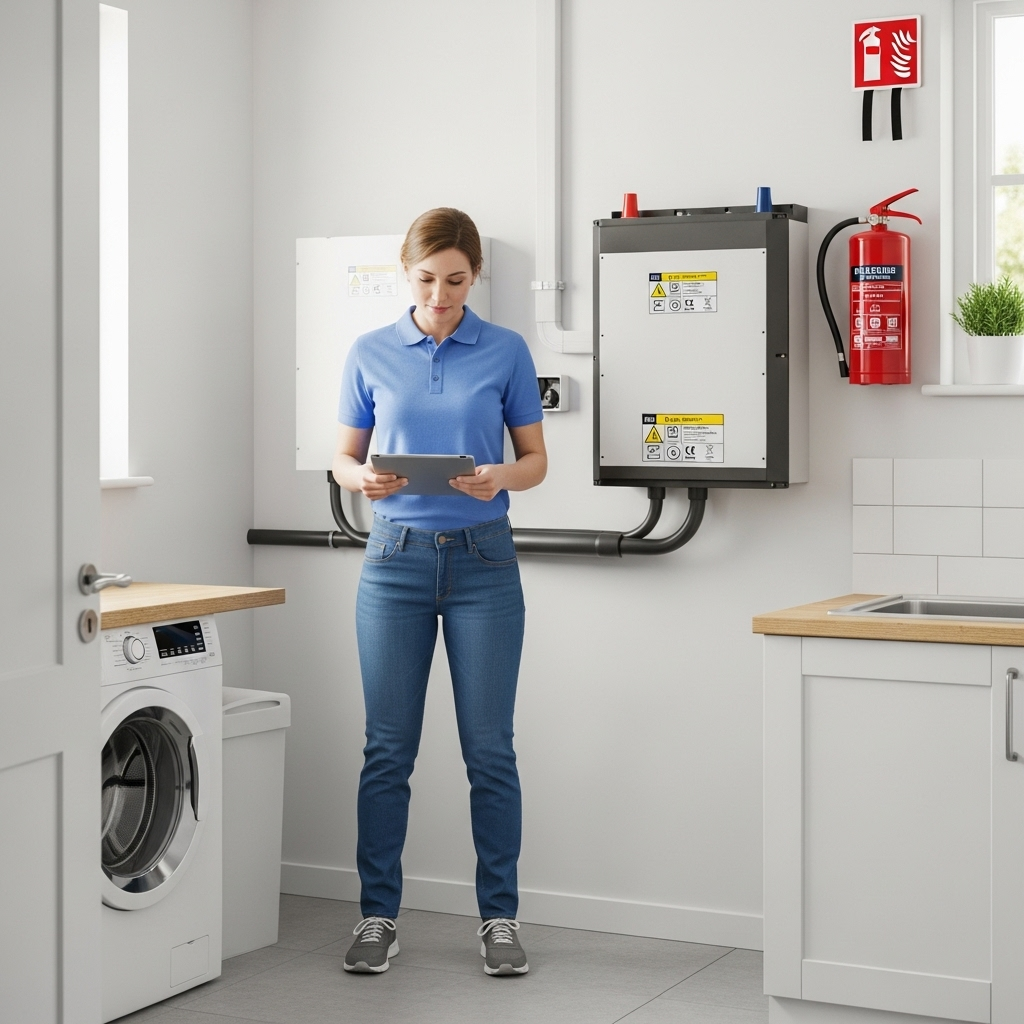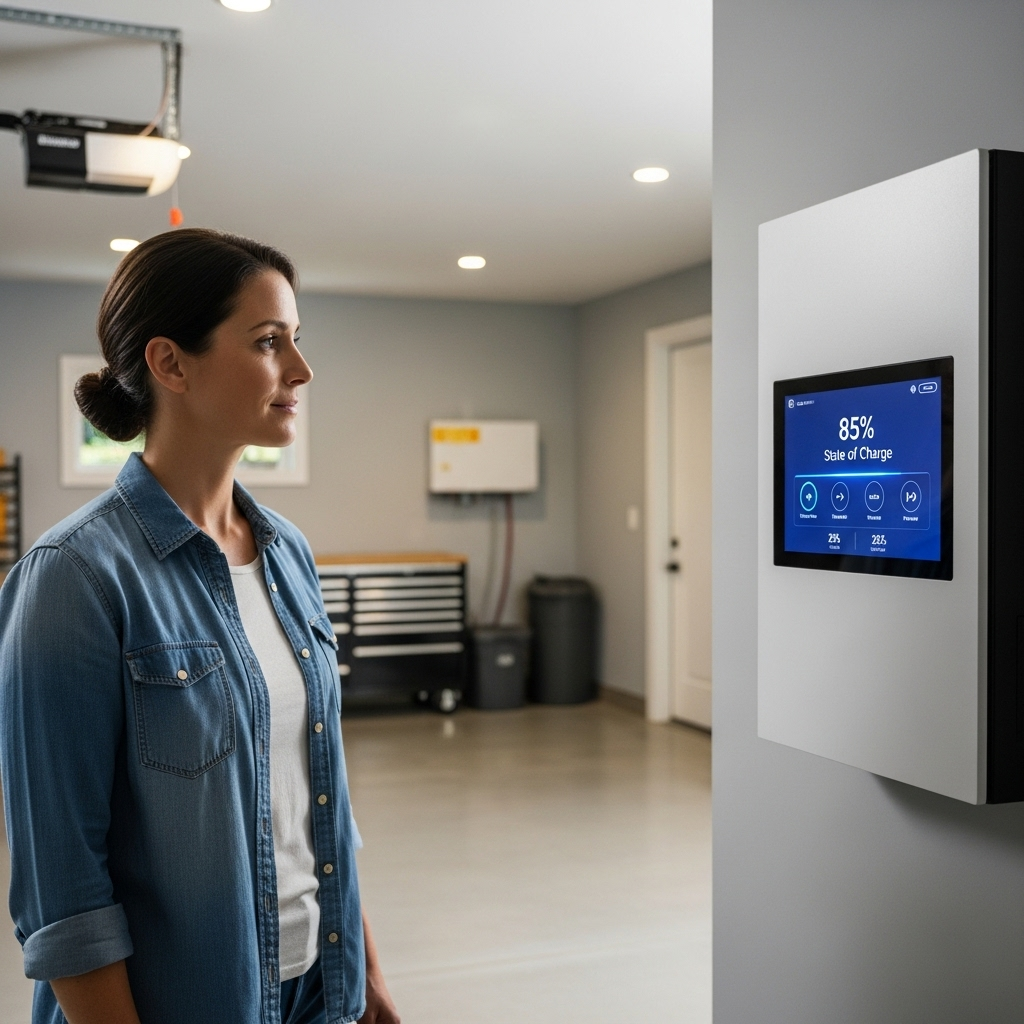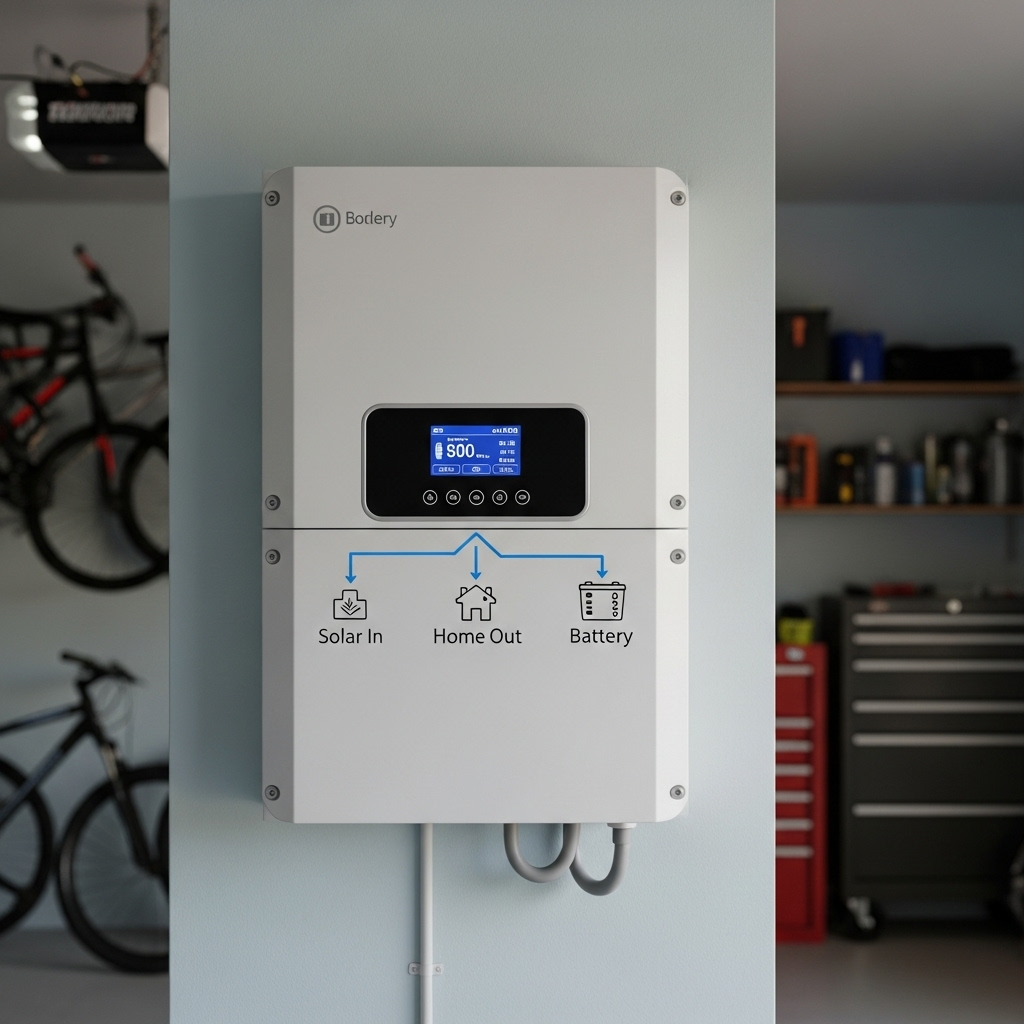A home battery backup system provides energy security and independence. To ensure it operates safely and reliably, a consistent inspection routine is vital. This home backup battery safety checklist offers a structured approach to monitoring your system's health, protecting your investment, and securing your peace of mind. Proactive checks can identify potential issues before they become significant problems.
Foundational Safety: The Environment Around Your Battery
The area where your battery is installed plays a critical role in its safety and performance. A secure environment is the first line of defense against potential hazards. Pay close attention to the physical space surrounding your system.
Proper Location and Clearance
Your battery system should be installed in a location specified by the manufacturer, typically away from main living areas and high-traffic zones. Ensure there is adequate clearance around the unit—at least three feet on all sides is a good practice unless the manual states otherwise. This space allows for proper airflow and provides easy access for maintenance and inspection. Never place flammable or combustible materials near your energy storage system.
Ventilation and Temperature Control
Heat is a primary adversary of battery health and safety. The installation area must be well-ventilated to dissipate heat generated during charging and discharging cycles. Blocked vents can lead to overheating, which reduces efficiency and can pose a safety risk. The ambient temperature should remain within the manufacturer's recommended range, avoiding extreme cold or heat, which can permanently affect battery capacity and lifespan.
Keeping the Area Clean and Unobstructed
Maintain a clean, dust-free environment around your battery unit. Dust and debris can accumulate on vents and electrical components, trapping heat and creating a potential fire hazard. The area should be kept clear of clutter, ensuring that nothing obstructs the unit or the emergency shutdown controls. A clean space is a safe space.
The Physical Inspection Checklist
Regular physical inspections allow you to spot signs of wear or damage early. These checks do not require deep technical knowledge but demand careful observation. Always consult your user manual before touching any part of the system and wear appropriate personal protective equipment (PPE).
Checking for Physical Damage
Visually inspect the exterior of the battery and inverter. Look for any signs of damage, such as cracks, dents, swelling, or leaking fluids. A bulging or distorted battery case is a critical warning sign that indicates an internal fault, and you should contact your installer immediately. Also, check for any discoloration, which could suggest overheating.
Securing Connections and Terminals
While you should not tighten connections yourself without proper training, you can visually inspect them. Look for signs of corrosion, which often appears as a white or greenish powder on the terminals. Check that all connections appear secure and that there are no loose or dangling wires. Loose connections can generate heat and create a serious safety hazard.
Inspecting Wiring and Conduit
Examine all visible wiring for signs of wear and tear. Look for frayed insulation, exposed wires, or damage from pests. Ensure that all wiring is neatly secured and protected within conduit as required by local electrical codes. Damaged wiring presents a significant risk and should be addressed by a qualified electrician.
Monitoring System Performance for Safety Clues
Modern energy storage systems provide a wealth of data through monitoring software. This information is not just for tracking energy production; it is a powerful tool for home energy storage safety. As the International Energy Agency (IEA) notes in its report on Next Generation Wind and Solar Power, combining battery storage with solar PV effectively manages energy flows, and diligent monitoring ensures this pairing operates safely.
Understanding Your Monitoring Software
Familiarize yourself with your system's monitoring dashboard, whether it is a mobile app or a web portal. Understand what the normal operating parameters look like for your system. This baseline knowledge will help you quickly identify when something is amiss. The software is your primary interface for assessing the battery's health without physically touching it.
Key Performance Indicators to Watch
Pay attention to key metrics that indicate the health of your battery. Consistent, sudden drops in performance or the inability to charge fully can signal a problem. For a deeper understanding of these metrics, it's useful to review how factors like State of Charge (SoC) and Depth of Discharge (DoD) impact battery life. The ultimate reference for solar storage performance provides valuable data on how these indicators directly relate to the longevity and operational safety of your system.
Responding to Alerts and Error Codes
Never ignore system alerts or error codes. These notifications are designed to warn you of potential issues, from minor faults to critical safety events. Consult your user manual to understand what each code signifies and follow the recommended actions. If an alert persists, contact customer support or a certified installer for assistance.
Essential Safety Equipment and Procedures
Preparation is a key component of any backup power battery inspection plan. Having the right equipment and knowledge on hand can make all the difference in an emergency. The growing adoption of home battery storage, as discussed in the IEA's Clean Energy Innovation report, underscores the need for standardized safety procedures for homeowners.
Fire Safety Measures
Keep a Class ABC fire extinguisher rated for electrical fires located near the battery system but not so close that it would be inaccessible during an incident. Install a smoke detector and a carbon monoxide detector in the room or area where the battery is located. Regularly test these devices to ensure they are functional.
Personal Protective Equipment (PPE)
When performing any visual inspection, it is wise to use basic PPE. This includes safety glasses and insulated gloves, especially when looking at terminals and connections. This precaution protects you from potential electrical hazards. Never wear metallic jewelry when working near your energy storage system.
Emergency Shutdown Protocol
You must know how to perform an emergency shutdown of your system. The procedure should be clearly outlined in your user manual. Practice the steps mentally so you can act quickly if needed. Ensure the shutdown controls are accessible and clearly labeled. This knowledge is crucial for protecting both your property and your personal safety.
Your Routine Safety Checklist Summarized
A proactive approach is the best way to ensure the safety and longevity of your home battery system. Consistent checks help you realize the full value of your investment, a concept central to the framework described by IRENA in its Electricity Storage Valuation Framework. Use the following table as a guide for your routine.
| Frequency | Task | Notes |
|---|---|---|
| Weekly | Review Monitoring App | Check for any alerts, error codes, or unusual performance data. |
| Monthly | Inspect the Battery Area | Ensure the area is clean, dry, and free of clutter. Confirm vents are unobstructed. |
| Monthly | Perform a Visual Inspection | Look for any signs of physical damage, leaks, or swelling on the battery casing. |
| Quarterly | Check Safety Devices | Test your smoke and carbon monoxide detectors. Check the charge on your fire extinguisher. |
| Annually | Professional Inspection | Schedule a check-up with a certified installer to inspect wiring, connections, and overall system health. |
Disclaimer: This checklist provides general guidance. Always follow the specific maintenance and safety instructions provided by your battery system's manufacturer. Electrical work should only be performed by qualified professionals.
Frequently Asked Questions
How often should I perform this safety check?
A quick visual check of the area and a review of your monitoring app should be done weekly. A more thorough physical inspection of the unit and the surrounding area is recommended on a monthly basis. An annual inspection by a certified professional is also a good practice.
What are the most critical warning signs of a battery problem?
The most critical warning signs include any physical deformation of the battery (swelling or bulging), leaking fluid, unusual odors (especially acrid or chemical smells), and audible hissing sounds. If you observe any of these, execute the emergency shutdown procedure and contact your installer immediately from a safe distance.
Can I perform all these checks myself?
Most of the checks, such as visual inspections and monitoring app reviews, can be performed by the homeowner. However, any tasks that involve opening panels, tightening electrical connections, or servicing internal components should only be performed by a qualified and certified technician.





Leave a comment
All comments are moderated before being published.
This site is protected by hCaptcha and the hCaptcha Privacy Policy and Terms of Service apply.